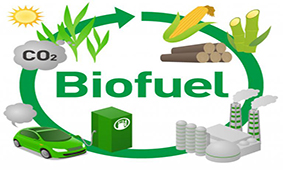
Viewpoint: Sustainable jet fuel poised for growth

SAF is a jet fuel sourced from non-petroleum feedstocks, such as waste oils, wood fiber or algae. Both California's Low-Carbon Fuel Standard (LCFS) and Oregon's Clean Fuels Program added alternative jet fuel as an eligible credit generator at the start of 2019.
With California LCFS credit prices near record program highs and the Oregon LCFS prices seeing more subdued gains, market participants see those programs as strong incentives for SAF growth.
But growth will not be as sharp as it otherwise could be because of producers' pull toward renewable diesel. Renewable diesel is often co-produced with SAF in the same refining process, which forces companies to make a decision about which fuel to produce. To date, the economics have largely favored renewable diesel. In 2019, alternative jet fuel producers have to best a carbon intensity (CI) score of 89.37g CO2/megajoule to generate LCFS credits, while alternatives to diesel have to beat a CI score of 94.17g. This is one reason renewable diesel production is still more attractive than SAF production, which will still be the case for the next few years.
Another bearish factor for SAF is the California Air Resources Board's (ARB) new cap on the price in the secondary market at the same price used for the LCFS program's credit clearance market — $200/t in 2016 dollars, adjusted for inflation. That price in 2019 is just over $213/t. Most renewable fuels projects have been profitable at current, and even lower, LCFS credit prices, so there is no immediate reason for growth to slow down for renewable diesel, biodiesel, or renewable natural gas.
But the ARB's decision may put at risk the next-generation technologies that are not yet commercialized on a large scale, including sustainable aviation fuel. The additional credit generators that have recently been added to the LCFS, and others that could be, might need extra investment for those projects to come to fruition.
This all puts the onus on airlines or intermediaries to pay a premium if they want to secure SAF. Although the premium of this fuel over conventional jet fuel is likely to narrow over the next decade with the further maturation of technologies and as more planned supply comes on line, it is unlikely the two fuels will reach price parity in the near term.
But other biofuel blending mandates for aviation and clean fuels programs are on the horizon, which will support growth of SAF, increase overall supply in the market, and help narrow that price premium.
Canada's proposed clean fuel standard has an aviation component, as does the program being developed by the Puget Sound Clean Air Agency, a regulator for the Seattle, Washington, region. British Columbia will soon add alternative jet fuel as a credit generator to its LCFS. And the fact that Nordic countries are implementing mandates to procure renewable jet fuel is encouraging and will grow this market, biofuels producers have said.
Norway has already passed legislation to introduce a blending requirement of 0.5pc of biojet for its aviation industry from 2020, while the Finnish government has approved a quota to achieve 30pc biofuels penetration in aviation by 2030. Sweden's government has proposed a greenhouse gas emissions-reduction obligation for jet fuel used in Sweden from 2021.
Decarbonization goals are gaining more attention in the global airline industry, the "flight shaming movement" is becoming more widespread in Scandinavia, and carriers are starting to mull compliance options for UN aviation agency Icao's planned carbon offsetting scheme for global aviation emissions, all of which will help support SAF's growth.
By Jessica Dell


Trump weighs using $2 billion in CHIPS Act funding for critical minerals

Codelco cuts 2025 copper forecast after El Teniente mine collapse

Electra converts debt, launches $30M raise to jumpstart stalled cobalt refinery

Barrick’s Reko Diq in line for $410M ADB backing

Abcourt readies Sleeping Giant mill to pour first gold since 2014

Nevada army depot to serve as base for first US strategic minerals stockpile

SQM boosts lithium supply plans as prices flick higher

Viridis unveils 200Mt initial reserve for Brazil rare earth project

Tailings could meet much of US critical mineral demand – study

Kyrgyzstan kicks off underground gold mining at Kumtor

Kyrgyzstan kicks off underground gold mining at Kumtor

KoBold Metals granted lithium exploration rights in Congo

Freeport Indonesia to wrap up Gresik plant repairs by early September

Energy Fuels soars on Vulcan Elements partnership

Northern Dynasty sticks to proposal in battle to lift Pebble mine veto

Giustra-backed mining firm teams up with informal miners in Colombia

Critical Metals signs agreement to supply rare earth to US government-funded facility

China extends rare earth controls to imported material

Galan Lithium proceeds with $13M financing for Argentina project

Kyrgyzstan kicks off underground gold mining at Kumtor

Freeport Indonesia to wrap up Gresik plant repairs by early September

Energy Fuels soars on Vulcan Elements partnership

Northern Dynasty sticks to proposal in battle to lift Pebble mine veto

Giustra-backed mining firm teams up with informal miners in Colombia

Critical Metals signs agreement to supply rare earth to US government-funded facility

China extends rare earth controls to imported material

Galan Lithium proceeds with $13M financing for Argentina project

Silver price touches $39 as market weighs rate cut outlook

















